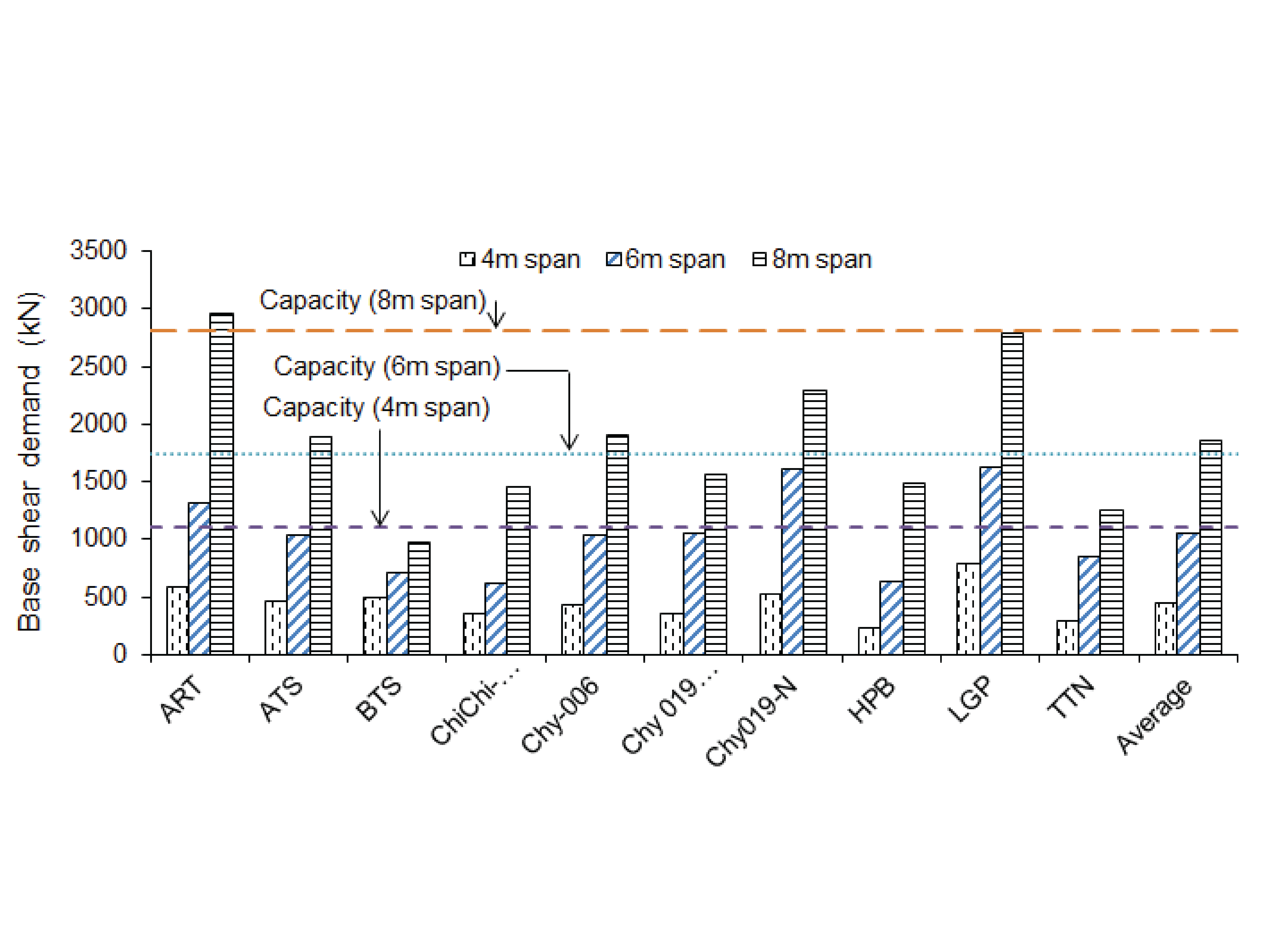Example Research Projects
Finite Element Simulation of Posttensioned Steel Beam-Column Connections
Steel beam-column connections with post-tensioned (PT) elements are proven systems that can provide adequate stiffness, strength, and ductility while eliminating permanent deformations in a moment-resisting frame subjected to seismic loading. In this project, detailed three-dimensional finite element (FE) models of steel beam-column connections with PT strands are developed and analyzed under cyclic loading. Efforts are made to overcome challenges in performing the nonlinear FE analysis of large-scale PT connections, which involves gap opening and closing behaviour, as well as contact and sliding phenomena. Geometric and material nonlinearities, pre-loaded bolts and strands are also considered in the modelling.
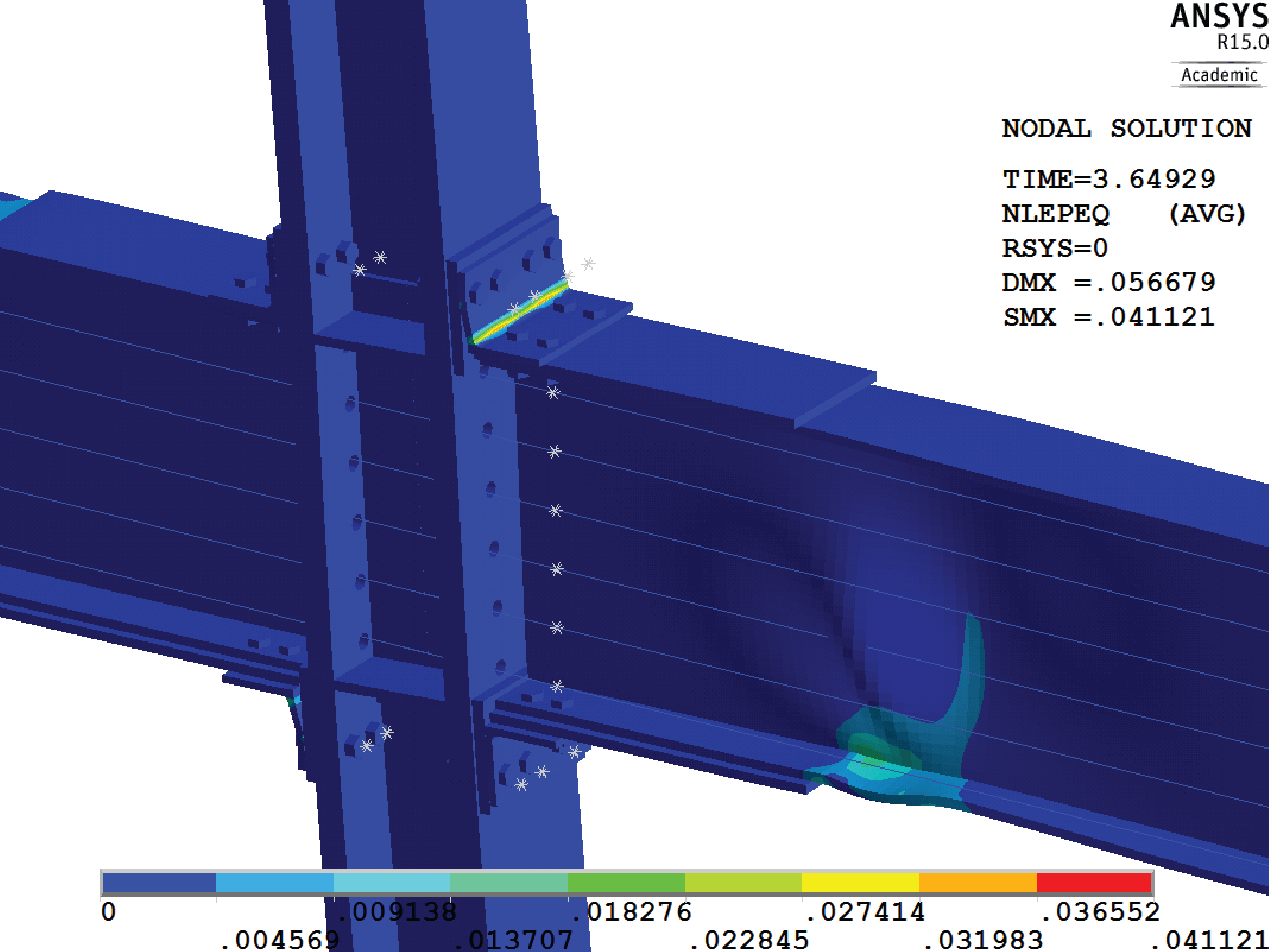
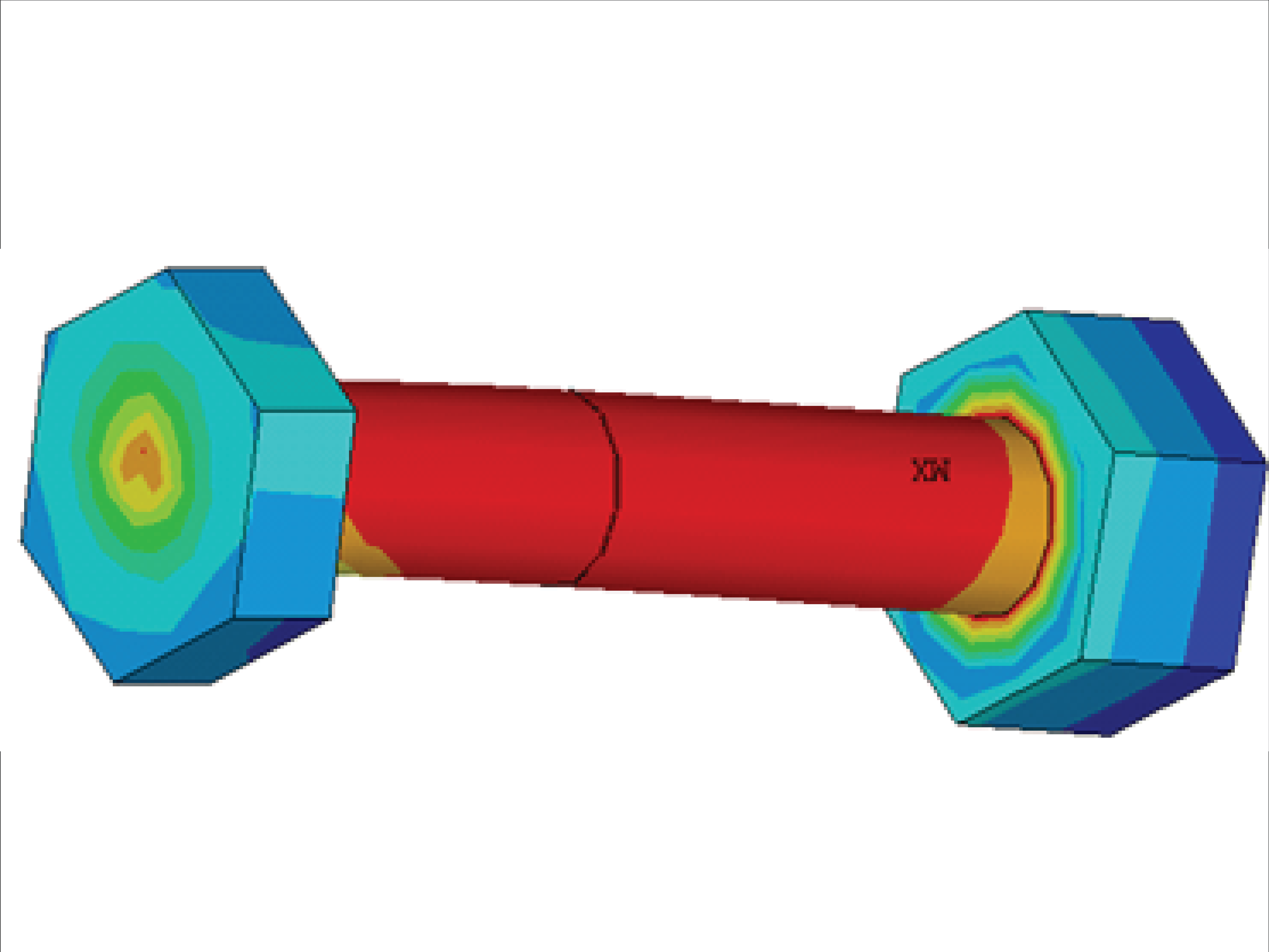
The FE simulations are capable of capturing the complex behaviour and limit states of PT connections, including gap opening and closing in the connection interface, beam local buckling, PT strand yielding, tensile bolts excessive yielding and damage in bolted angles. Through a verification study, the results from the FE models in ANSYS are validated with experimental results on interior PT connections with top-and-seat angles. The validated FE models are used to assess the lateral response and damage state behaviour of PT connections. Read more about this research. (external link)
Seismic Performance-Based Assessment of Controlled Rocking Steel Braced Frames
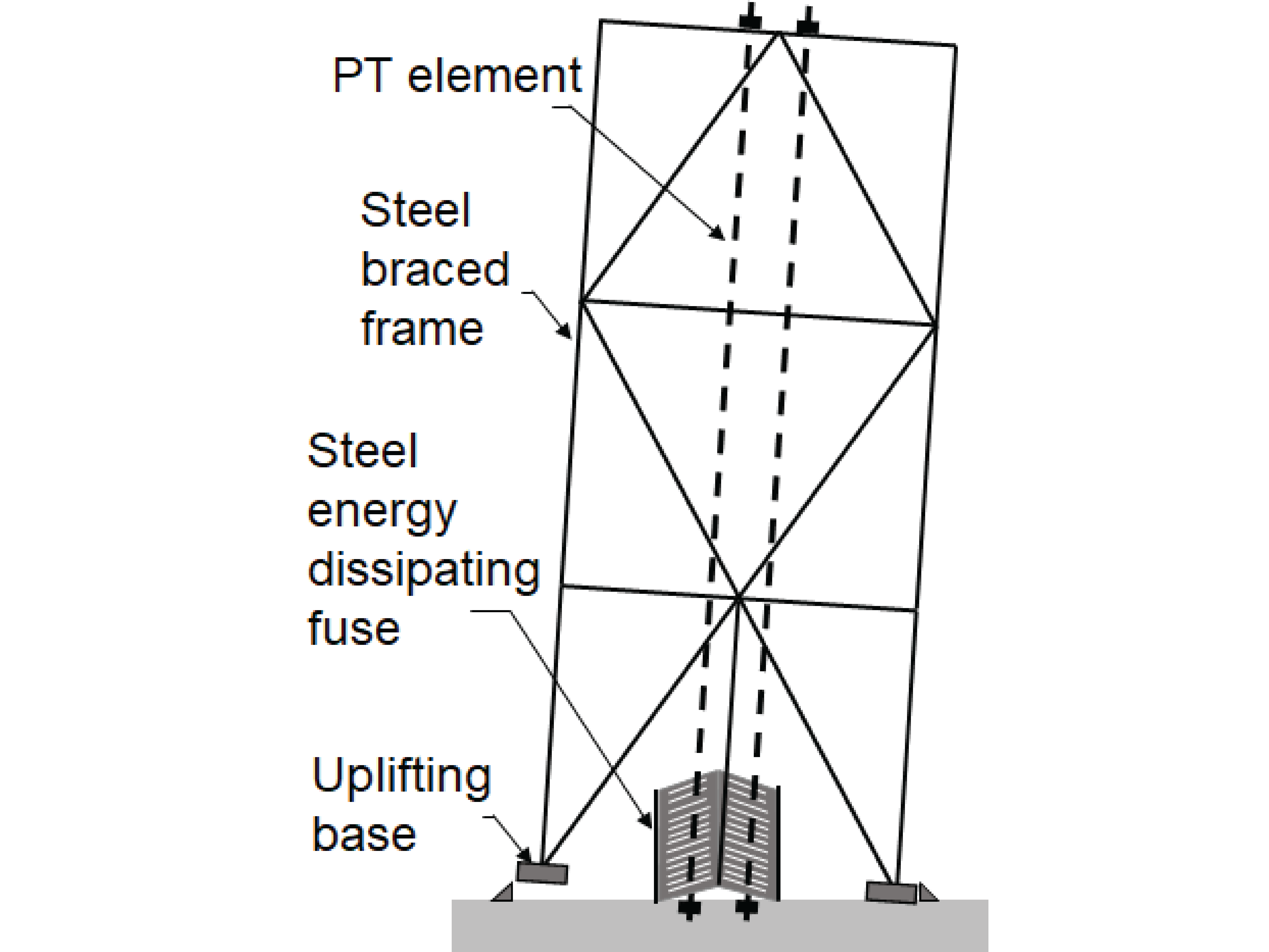
Controlled rocking steel braced frame (CRBF) has been developed as an enhanced seismic performance system that minimizes the potential for permanent structural damage in buildings subjected to major earthquakes, thereby enabling economical and feasible repairs. Their desirable performance depends on the mechanical properties of fuse elements and post-tensioned strands as well as other design factors such as frame aspect ratio.
This project firstly aims to assess the influence of design parameters related to the fuse and PT materials on the seismic response of CRSBFs. The sensitivity of the seismic response is assessed using the statistical design of the experiment framework. This statistical analysis method has the advantages of being strategically efficient in identifying parameter effects and it provides insight into the factor-response relationships while accounting for interactions.
The second goal of the study is focused on optimizing the seismic response of CRSBFs with respect to the influential factors identified in the sensitivity analyses. Using a response surface methodology and desirability approach, multiple-response optimization is applied to determine the design variable values needed to simultaneously minimize the maximum transient and residual roof drift ratio and peak floor acceleration. Read more about this research by clicking this link. (external link)
In this project, surrogate models are also developed to predict the seismic demand parameters of peak and residual roof drift ratios in CRBFs. Analytical data on their seismic response is obtained from nonlinear response history analyses. The surrogate models are then used to formulate parameterized fragility functions that describe the vulnerability of CRBFs as a function of key structural design parameters.
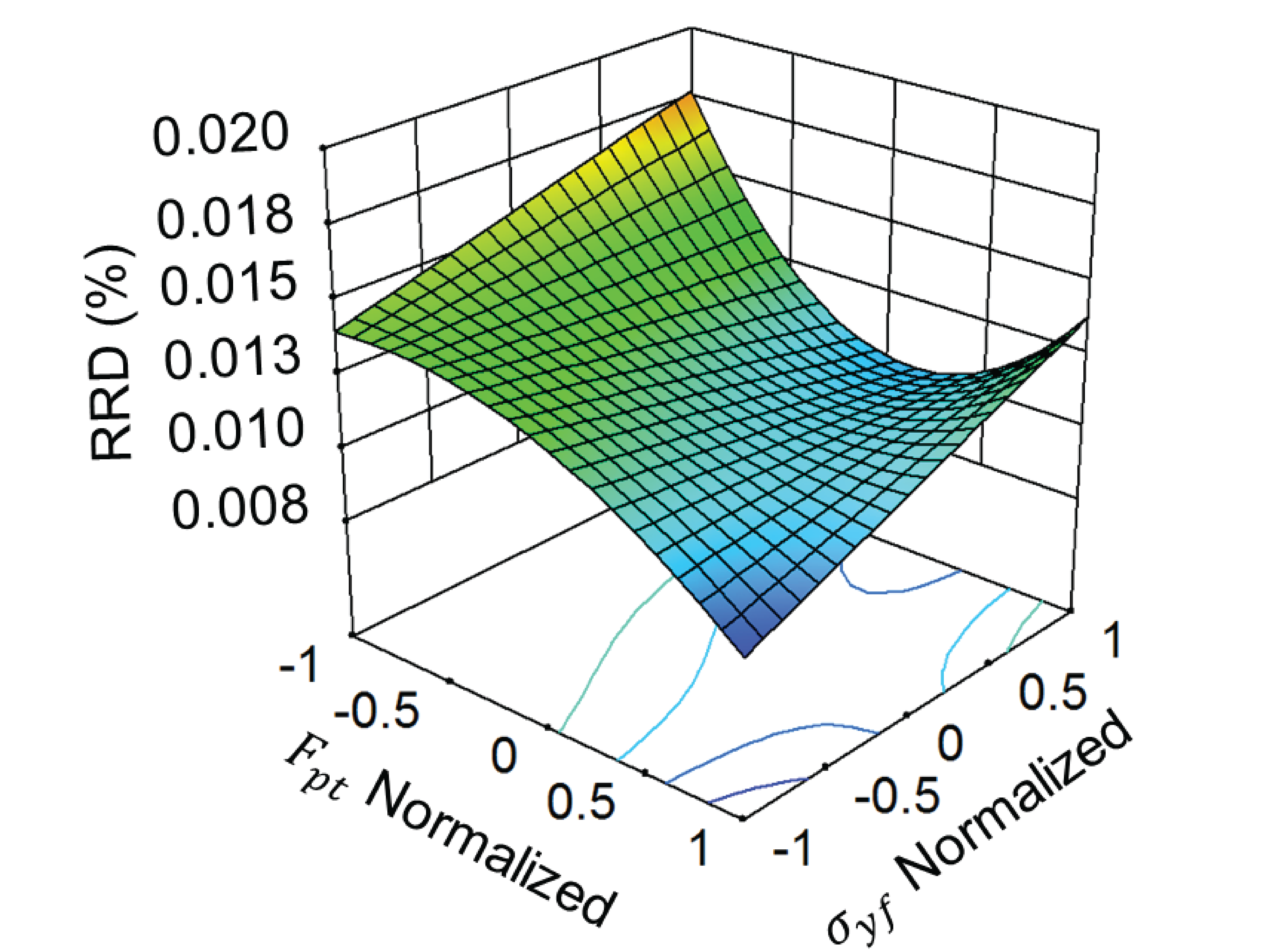
Seismic Response of Steel Braced Frames Equipped with NiTi Shape Memory Alloy
This work examines the seismic response of steel braced frames with Shape Memory Alloy (SMA) braces. Incremental dynamic analyses are performed for SMA-based steel braced frames and comparable buckling-restrained braced frames. The SMA-braces lead to a uniform distribution of inelastic response over the height of the buildings, as well as mitigating seismic response in terms of maximum inter-story drift and residual roof displacement. By comparing the responses of SMA and buckling-restrained braced frames under higher intensities of earthquake loading, it is observed that SMA-braces are more beneficial especially under severe ground motion excitations. Read more about this research by clicking this link (external link) .
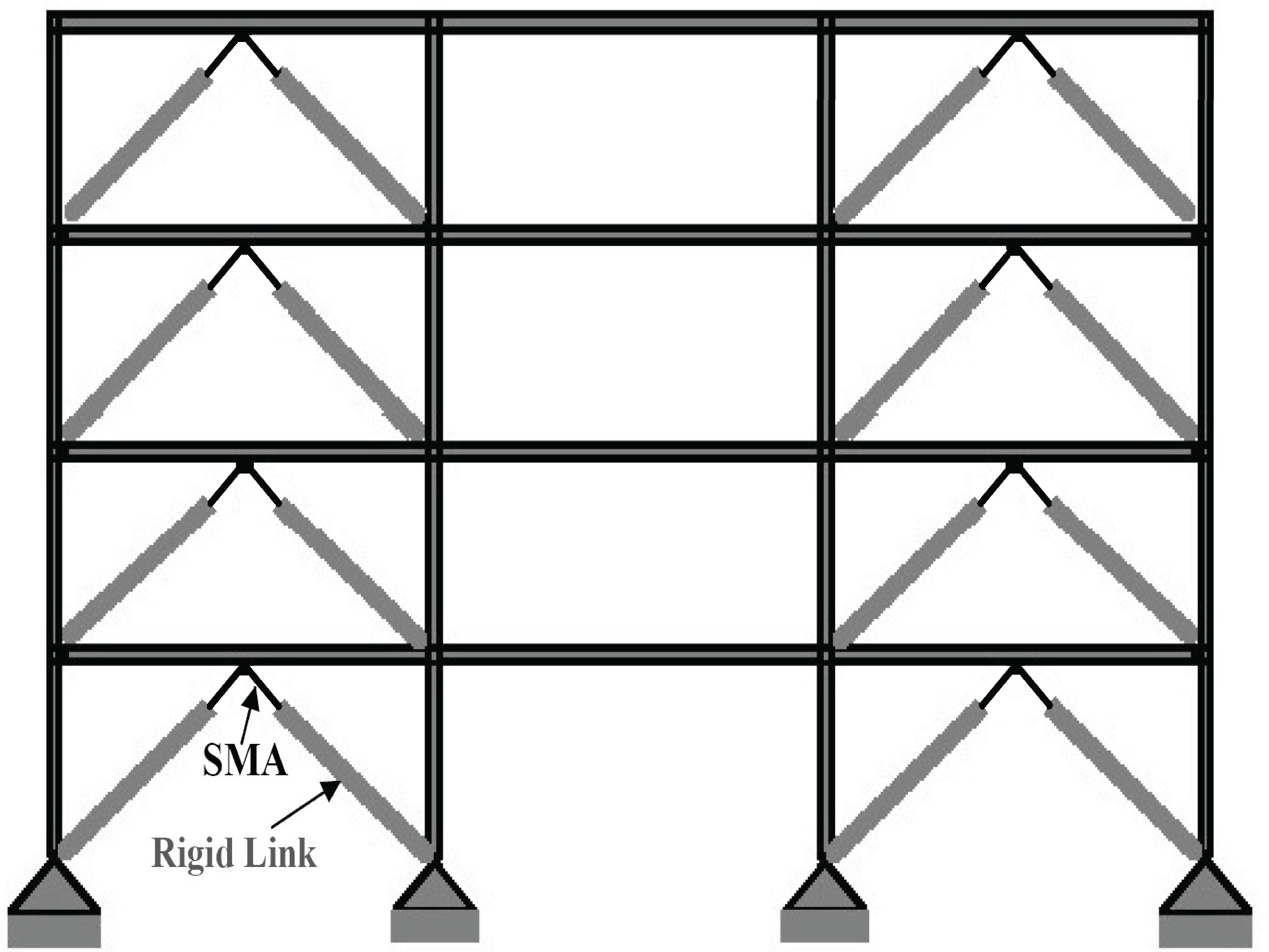
Design Evaluation of Buckling Restrained Steel Braced Frames Designed Acccording to NBCC 2010
This work evaluates the overstrength, ductility and response modification factors for low to mid-rise Buckling Restrained Braced Frames (BRBFs) designed as per the National Building Code of Canada (NBCC) 2010. In addition to nonlinear static pushover analyses, dynamic response history analyses are performed to assess the seismic response of 4-, 6-, and 8-story BRBFs. Different bracing configurations, including chevron (inverted-V) and split-X braces, are considered for the building frames with varied frame span lengths of 6m and 8m. The results confirm that the NBCC prescribed design values for overstrength and ductility factors provide reasonable estimations of the lower bound for these factors. The response modification factor obtained in this project ranged from 4.8 to 6 for different frames. The results also indicate that the response modification factor decreases with the increase of story height and span length. Moreover, bracing configurations may slightly affect the response modification factor of BRBFs. Read more about this research by checking this link. (external link)
